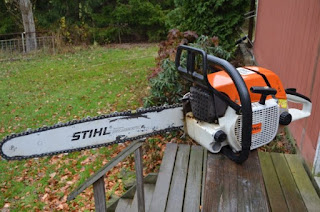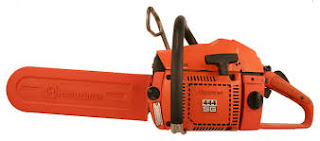Last Big Jonsereds
Jonsered, as it was abbreviated to for some strange reason, lost its way after the merger to some extent. We can however thank them for what we now know as the “clamshell” design of crankcase with saws like the 520sp which used a one piece magnesium case bottom with the cylinder built up on top of it. When composites improved Husqvarna and Stihl would adopt this in plastic rather than mag for their “non-professional” saws.
The merger did produce some very interesting saws that are certainly worth a look for the enthusiast and collector. This started with the last “real” Jonsereds the 910e. This was a good saw that combined many Johnny traits in a torquey 87cc package, albeit with weak rear anti-vibe mount. This saw received some Partner input in the handle design and became the 920, with a regressed “Husky” style cylinder – it could not match the 910 for shove, but it was smoother. Final incarnation the 930 super, got it all pretty right, and was powerful and comfortable and for a mid 80’s saw – it still feels good today.
At this point someone at Electrolux got on the gear and while the mid range Johnny’s became red and black huskies, the big reds went off on a pretty massive tangent. While it might be through that the 2094 and 95 are just Huskies, they are actually a development of the 930 and don’t share much with their Husky counterparts. These are very desirable saws that go very hard and are extremely well suited to Australian hardwood.
Oddball that you have to love is the 2083. This is an almost entirely Partner design and looks like nothing else made. They come up every now and then and are an interesting piece of history as perhaps the last true Partner design in a big saw (you can see millions Partner inspired small saw). Another Jonsered that was actually a Partner is the 1020 which was also marketed in Australia as a Mac1000 – both are actually a Partner P100.
These big Jonsered’s are unbelievable saws that are still usable today. While they don’t have the classic look of the older models, they were built in a time of strife and innovation. While the new 572 owes a lot to the 162se, any saw with compact dimensions, straight into crankcase porting and spring antivibe, should tip its hat to Partner and Jonsereds – classic Swedes.




Comments
Post a Comment